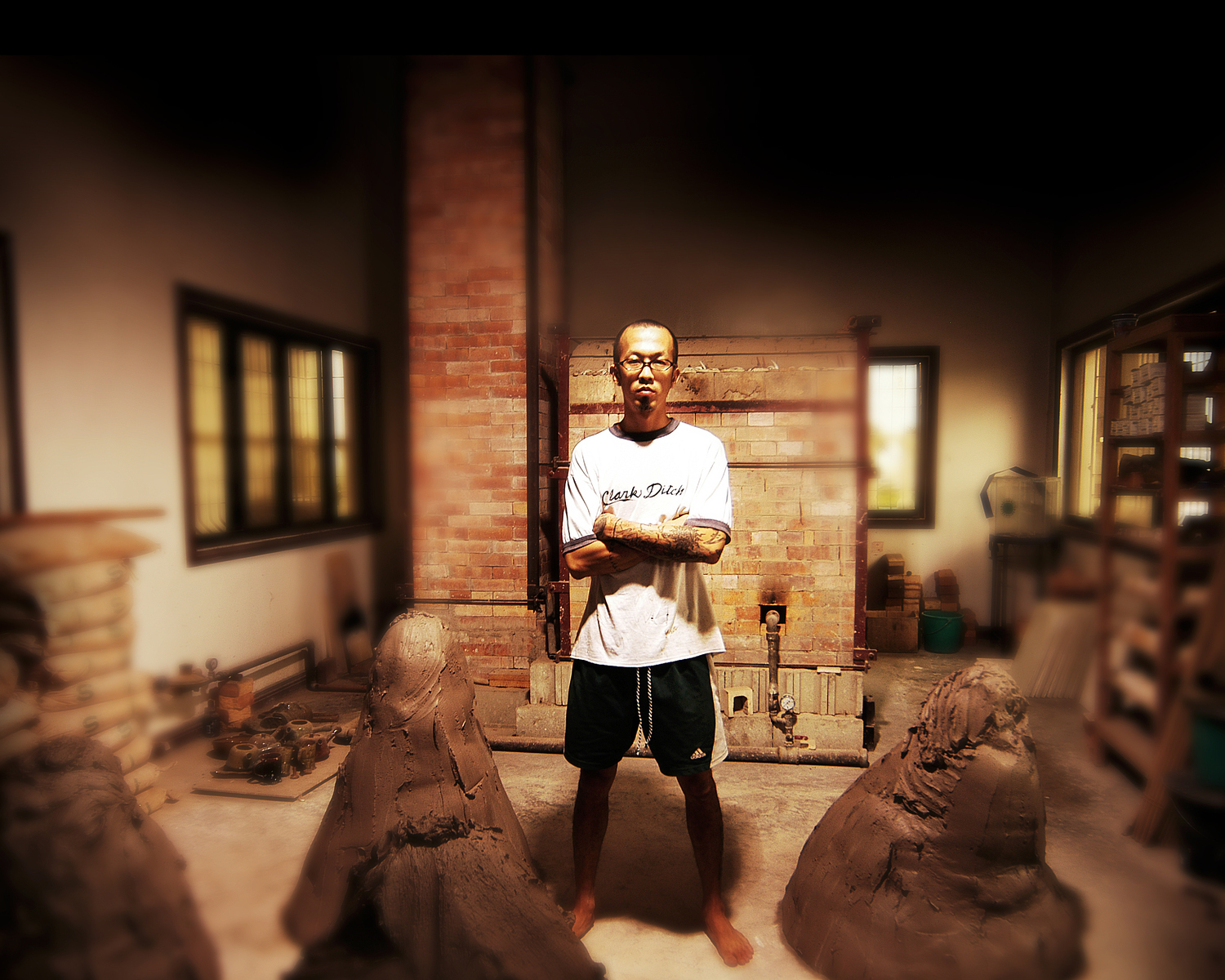Indonesia
An exemplary ceramic center in Indonesia is located at Bandung, on the island of Java. The Ceramic Research Center is acclaimed both for its quality products and for upholding high standards of ceramic production. Established by the Dutch in 1922 as a research institution, it aimed to improve ceramic technology and artistic designs and to enhance the quality and quantity of ceramic production in Indonesia. It also contributes to the betterment of the country by providing jobs and increasing income at a local level, and by perpetuating the ancient ceramic craft. It has modernized the industry by applying mechanization to the various stages of ceramic production.
An imaginative range of unglazed earthenwares and stonewares are made at the center. Fanciful animal-shaped containers for flowers and candles are common. The shapes and designs are created and executed by Indonesians, a system which contributes to the preservation of an indigenous, contemporary culture.
Abstract earthenware figures, both human and mythical, are a feature of kilns located at Tabanan and Kapal in Bali. Balanced and carefully potted earthenware utensils for daily use are the main product of kilns in Kasongan, Central Java.
The first blue and white wares were produced at Bandung in the late 1960s. Today, copies of antique Chinese blue and white, celadon and iron-spotted wares, as well as Vietnamese and Thai ceramics, are made at the center. Scientific research ensures that the copies are technically and aesthetically as accurate as possible. They are sold as straightforward copies. Local materials are sued fro the clay and glaze, and the designs are painted by hand, in the style of Ming-period wares. However, in contrast to other ancient techniques used, most of the manufacturing process is done by machine and the wares are fired in oil - rather than a wood - fuelled kiln.
The ability to produce high-fired stoneware and porcelain of high quality extends to East Java where the village of Dinoyo specializes in blue and white ware, sometimes decorated with underglaze red. The most recent reproductions of Chinese wares made at Dinoyo are polychrome dishes in yellow, green, and dark red. Another factory making blue and white copies of antique Chinese wares is located at Sukabumi in West Java.
The most famous modern ceter in Southeast Asia producing Yixing teapots is located in Indonesia at Klampok, Banjanegara, in Central Java. The technique of copying Chinese Yixing teapots is well known and accomplished in a masterly fashion in Southeast Asia. Simple unglazed stoneware forms in a brownish color, ranging from russet to purple, are reproduced today with such accuracy that it is difficult to distinguish between the copy and the original. Designed for use by one person, the small shapes continue to be admired and used today.

![images[2].jpg](https://images.squarespace-cdn.com/content/v1/532744c3e4b051c9f1ed3284/1395886409151-P5ZA0GSZI0AB4AJWSTQJ/images%5B2%5D.jpg)
![images[4].jpg](https://images.squarespace-cdn.com/content/v1/532744c3e4b051c9f1ed3284/1395886412559-WBIIXDMIGK80UM9NHFED/images%5B4%5D.jpg)
![images[6].jpg](https://images.squarespace-cdn.com/content/v1/532744c3e4b051c9f1ed3284/1395886420748-LMH7FWS3VWUAEW47MDSZ/images%5B6%5D.jpg)
![jenggala3[1].gif](https://images.squarespace-cdn.com/content/v1/532744c3e4b051c9f1ed3284/1395886424506-GUJYIAZN33IJ03Q5BKDJ/jenggala3%5B1%5D.gif)